An ICT Prototyping Framework for the “Port of the Future”
Abstract
:1. Introduction
2. Related Work
3. The Reference Architecture
3.1. Cloud Resources
3.1.1. Infrastructure as a Service Layer
- a set of Road Side Units (RSUs) and On-Board Units (OBUs) following the EU directives about “Smart Roads” and complying with ETSI TC ITS standards [23];
- a set of smart IoT devices measuring sea current strength and wave height, weather conditions, noise level, presence of water standings on the landside (at the port and in highways/motorways), air contamination (pollutants and GHG, most notably methane and CO levels), etc.;
- a Real-Time Kinematics anchor permitting to correct the GNSS signal in a noisy environment (as when in the proximity of container stacks and docked vessels);
- a bathymetric probe (multibeam sonar emitter) to measure the water depth around the vessel trajectories.
3.1.2. Platform as a Service Layer
- providing a unique set of APIs for data access, regardless of the specific technology used (either relational, document-based/non-relational, geographical, IoT-oriented, object-oriented, time series, etc.),
- providing mirror databases of external sources of information managed by independent organizations (e.g., road, city, and regional traffic and mobility centers), and
- interoperating with a set of commercial and sector-specific Distributed Ledger Technologies (i.e., blockchains), securing trusted information in a privacy-aware manner.
- JBOSS Teiid—Data Virtualization Layer [24]: a cloud-native and open-source data virtualization platform enabling distributed databases, as well as multiple heterogeneous data sources, to be accessed by means of a common and standard set of APIs (e.g., JDBC, ODBC, REST, OData, SOAP, etc.). On one side, it allows aggregating data coming from disparate data sources, and on the other side, it permits to define a proper set of roles (according to create-read-updated-delete operations) allowing data consumers to consume specific data sets. The current instance of the data virtualization layer is based on the WildFly application server [25], providing robust operations for transaction management, connection pooling, security configuration, resource management, and clustered deployment. The above-mentioned instance is deployed in the form of a docker container, running on a virtual machine using Ubuntu 20.04 Server as the main operating system (64-bit architecture). The following basic configuration of the considered virtual machine has been used: 8 GB of RAM, 100 GB of storage space, and 4 CPU cores (AMD EPYC 7281). In order to feed the developed service prototypes with real data, three different virtual databases and procedures have been implemented at this level.
- Mobius OneM2M IoT Server Platform [26]: an open-source IoT platform based on the oneM2M standard [27]. The considered implementation of the standard supports a resource-oriented architecture with a common set of service functionalities such as registration, discovery, security, groups management, data management, subscription, notification, device management, network service exposure, location, etc. Moreover, the solution supports multiple protocols binding over standard interfaces (e.g., HTTP, CoAP, MQTT, or Web Sockets). The Mobius machine-to-machine platform allows managing and interacting with smart IoT devices deployed in the Port of Livorno, such as meteorological stations, bathymetric probes, pollution and parking sensors, as well as data coming from the Automatic Identification System dispatcher. It has been deployed in a form of a docker container within a dedicated virtual machine with the following configuration: Ubuntu 20.04 Server as the main operating system (64-bit architecture), 8 GB of RAM, 100 GB of storage space, and 4 CPU cores (AMD EPYC 7281).
- Database Management Systems (DBMS): a set of software systems used to define, store, retrieve and manipulate data in a heterogeneous set of databases, serving the current information systems within the Port of Livorno, such as the Tuscan Port Monitoring System (TPCS [28]) and several monitoring applications. This includes relational databases (SQL-compliant), document-oriented databases (e.g., MongoDB), and object-oriented data sources (e.g., PostgreSQL). An adaptation to the ESRI ArcGIS has also been implemented. The considered data sources are then made accessible by means of the Data Virtualization Layer through a common set of wrappers, according to a specific prototyping service.
- Interoperachain—Cross DLT Layer: a mediator service providing data immutability capabilities by interacting with different distributed ledger technologies such as Bitcoin, Ethereum, HyperLedger Fabric, and IOTA (the main distributed ledger technology used at the Port of Livorno). It has been implemented by using the OpenAPI standard for the input/output interfaces definition that can be then easily integrated, abstracting the complexity of the underlying DLTs. As a matter of fact, OpenAPI allows to automatically generate client-side code by supporting 33 different programming languages. Interoperachain guarantees a high service availability as well as a robust fault tolerance, avoiding technological lock-in from the user perspective.
3.1.3. Software as a Service Layer
- WSO2 API Gateway [29]: an open-source, standardized, and componentized middleware platform that implements typical enterprise service bus functionalities by supporting microservices’ logic development (by means of SDK based on ASP.NET Core Framework) and APIs’ life cycle management. It secures, protects, manages, and scales API calls by intercepting API requests and applying security policies. The WSO2 API Gateway instance is deployed in a docker container, running in a virtual machine and using Ubuntu 20.04 Server as the main operating system (64-bit architecture), 4 GB of RAM, 80 GB of storage space, and 2 CPU cores (AMD EPYC 7281).
- RabbitMQ [30]: an open-source and multiprotocol message broker supporting the communication and interoperability among different microservices. Based on asynchronous communication, it allows microservices to perform distributed tasks by communicating with each other throughout high-performance queues. RabbitMQ instance has been deployed in a dedicated virtual machine with Ubuntu 20.04 Server as operating system, 4 GB of RAM, 40 GB of storage space, and 1 CPU core (AMD EPYC 7281).
- Authorization Server: authentication and authorization component of the ICT stack, based on industry-standard protocol OAuth2 [31]. According to this, we relied on OpenID Connect 1.0 Hybrid Flow [32] as the identity layer on top of the OAuth 2.0 protocol. This allows clients to verify the identity of the end users based on the authentication performed by the Authorization Server, as well as to obtain basic profile information about such end users in an interoperable and REST-like manner. The Authorization Server implements a single-sign-on (SSO) authentication scheme, and it is built upon the authorization token (JSON Web Token-JWT [33]) which is released to a specific user in order to invoke selected microservices. The JWT is emitted and validated by a token issuer authority, according to a given, as well as predefined, set of grants and access rules. In our configuration, the Authorization Server is deployed in a virtual machine whose specifications are based on Ubuntu 20.04 Server as an operating system, 4 GB of RAM, 80 GB of storage space, and 2 CPU cores (AMD EPYC 7281).
- Swagger [34] is an OpenAPI framework. Inside the Swagger environment, it is possible to design API basic code using YAML files that describe API behaviour and contain the API documentation. The Swagger framework produces also a code skeleton for the interface.
- VMWare ESXi [35] is a virtualization hypervisor. ESXi manages multiple Virtual Machines connected through Software-Defined Networks.
- Kubernetes [36]: some infrastructure components run in docker containers. Kubernetes manages the containers and creates, deploys, and stops instances based on multiple configurations files;
- Software Defined Networking (SDN): the network is configured with software switches, VLANs, and firewalls, inside the VMWare network layer and the Kubernetes virtual network.
3.2. Design and Development of Service Prototypes
3.2.1. Service A: Enhanced Awareness for Vessel Manoeuvres
3.2.2. Service B: Ship Stay Time
3.2.3. Service C: Truck Turnaround Time
4. Results
5. Discussion
6. Conclusions
Author Contributions
Funding
Data Availability Statement
Acknowledgments
Conflicts of Interest
References
- Moros-Daza, A.; Amaya-Mier, R.; Paternina-Arboleda, C. Port Community Systems: A structured literature review. Transp. Res. Part A Policy Pract. 2020, 133, 27–46. [Google Scholar] [CrossRef]
- Wilmsmeier, G.; Monios, J.; Lambert, B. The Directional Development of Intermodal Freight Corridors in Relation to Inland Rerminals. J. Transp. Geogr. 2011, 19, 1379–1386. [Google Scholar] [CrossRef] [Green Version]
- Pagano, P.; Antonelli, S.; Tardo, A. C-Ports: A proposal for a comprehensive standardization and implementation plan of digital services offered by the “Port of the Future”. Comput. Ind. 2021, 134, 103556. [Google Scholar] [CrossRef]
- Notteboom, T. Container Shipping And Ports: An Overview. Rev. Netw. Econ. 2004, 3, 2. [Google Scholar] [CrossRef] [Green Version]
- Wilmsmeier, G.; Notteboom, T. Determinants of liner shipping network configuration: A two-region comparison. GeoJournal 2011, 76, 213–228. [Google Scholar] [CrossRef]
- Notteboom, T.; Rodrigue, J. Port Regionalization: Towards a New Phase in Port Development. Marit. Policy Manag. 2005, 32, 297–313. [Google Scholar] [CrossRef]
- Monios, J.; Wilmsmeier, G. The role of intermodal transport in port regionalisation. Transp. Policy 2013, 30, 161–172. [Google Scholar] [CrossRef] [Green Version]
- Molavi, A.; Lim, G.; Race, B. A framework for building a smart port and smart port index. Int. J. Sustain. Transp. 2019, 14, 686–700. [Google Scholar] [CrossRef]
- UNCTAD. Port Marketing and the Challenge of the Third Generation Port. Report by Trade and Development Board. 1992. Available online: https://unctad.org/system/files/official-document/tdc4ac7_d14_en.pdf (accessed on 19 November 2021).
- UNCTAD. The Fourth Generation Port. UNCTAD Ports Newsletter 1999. Available online: https://unctad.org/system/files/official-document/posdtetibm15.en.pdf (accessed on 19 November 2021).
- The Motorways of the Sea Digital Multi-Channel Platform. Smart Port. 2015. Available online: https://www.onthemosway.eu/wp-content/uploads/2015/07/1-Smart-Ports-v-2.0.pdf?00cab0 (accessed on 19 November 2021).
- Minh, Q.; Sadiq, R.; Gucma, L. Simulation-Based Performance Assessment Framework for Optimizing Port Investment. J. Waterw. Port Coast. Ocean Eng. 2021, 147, 04021010. [Google Scholar]
- Ignaccolo, M.; Inturri, G.; Giuffrida, N.; Torrisi, V. A Sustainable Framework for the Analysis of Port Systems. Eur. Transp. 2020, 78, 1–19. [Google Scholar] [CrossRef]
- Sustainable Urban Transport: Avoid-Shift-Improve (A-S-I). Transformative Urban Mobility Initiative. 2019. Available online: https://www.transformative-mobility.org/assets/publications/ASI_TUMI_SUTP_iNUA_No-9_April-2019.pdf (accessed on 22 November 2021).
- Acciaro, M.; Vanelslander, T.; Sys, C.; Ferrari, C.; Roumboutsos, A.; Lee, J. Environmental sustainability in seaports: A framework for successful innovation. Marit. Policy Manag. 2014, 41, 480–500. [Google Scholar] [CrossRef]
- Stein, M.; Acciaro, M. Value Creation through Corporate Sustainability in the Port Sector: A Structured Literature Analysis. Sustainability 2020, 12, 5504. [Google Scholar] [CrossRef]
- Bolognese, M.; Fidecaro, F.; Palazzuoli, D.; Licitra, G. Port Noise and Complaints in the North Tyrrhenian Sea and Framework for Remediation. Environments 2020, 7, 17. [Google Scholar] [CrossRef] [Green Version]
- D’Amico, G.; Szopik-Depczyńska, K.; Dembińska, I.; Ioppolo, G. Smart and sustainable logistics of Port cities: A framework for comprehending enabling factors, domains and goals. Sustain. Cities Soc. 2021, 69, 102801. [Google Scholar] [CrossRef]
- Schauer, S.; Rainer, B.; Museux, N.; Faure, D.; Hingant, J.; Carvajal Rodrigo, F.J.; Beyer, S.; Company Peris, R.; Zamarripa Lopez, S. Conceptual Framework for Hybrid Situational Awareness in Critical Port Infrastructures. In CRITIS 2018, Proceedings of the 13th International Conference, Kaunas, Lithuania, 24–26 September 2018; Springer: Berlin/Heidelberg, Germany, 2018; pp. 191–203. [Google Scholar]
- Lacalle, I.; Belsa, A.; Vaño, R.; Palau, C.E. Framework and Methodology for Establishing Port-City Policies Based on Real-Time Composite Indicators and IoT: A Practical Use-Case. Sensors 2020, 20, 4131. [Google Scholar] [CrossRef]
- Pagano, P. Complex Infrastructures: The Benefit of ITS Services in Seaports. In Intelligent Transportation Systems—From Good Practices to Standards; CRC Press, Taylor & Francis Group: Boca Raton, FL, USA, 2016; pp. 171–191. [Google Scholar]
- Cavalli, L.; Lizzi, G.; Guerrieri, L.; Querci, A.; De Bari, F.; Barbieri, G.; Ferrini, S.; Di Meglio, R.; Cardone, R.; Tardo, A.; et al. Addressing Efficiency and Sustainability in the Port of the Future with 5G: The Experience of the Livorno Port. A Methodological Insight to Measure Innovation Technologies’ Benefits on Port Operations. Sustainability 2021, 13, 12146. [Google Scholar] [CrossRef]
- Vermesan, O. IoT Technologies for Connected and Automated Driving Applications. In Internet of Things—The Call of the Edge-Everything Intelligent Everywhere; River Publishers: Gistrup, Denmark, 2020; pp. 255–306. [Google Scholar]
- Teiid: Cloud-Native Data Virtualization. Available online: https://github.com/teiid/teiid (accessed on 22 November 2021).
- Teiid WildFly: Teiid Based on WildFly Application Server. Available online: https://teiid.github.io/teiid.io/teiid_wildfly/ (accessed on 22 November 2021).
- Mobius OneM2M: OneM2M IoT Server Platform. Available online: https://github.com/IoTKETI/Mobius (accessed on 22 November 2021).
- OneM2M Sets Standards for the Internet of Things & M2M. Available online: https://www.onem2m.org/technical (accessed on 22 November 2021).
- TPCS-Tuscan Port Community System. Available online: http://www.tpcs.eu (accessed on 23 November 2021).
- Overview of the WSO2 API Gateway-API Manager Documentation 3.2.0. Available online: https://apim.docs.wso2.com/en/3.2.0/learn/api-gateway/overview-of-the-api-gateway/ (accessed on 24 November 2021).
- RABBITMQ-Open Source Message Broker. Available online: https://www.rabbitmq.com/ (accessed on 24 November 2021).
- OAuth 2.0-Industry Standard Protocol for Authorization. Available online: https://oauth.net/2/ (accessed on 24 November 2021).
- OpenID Connect 1.0-[RFC6749] Protocol. Available online: https://openid.net/specs/openid-connect-core-1_0.html (accessed on 24 November 2021).
- JSON Web Token-Industry Standard RFC 7519. Available online: https://jwt.io/ (accessed on 24 November 2021).
- Swagger. Available online: https://swagger.io/ (accessed on 20 December 2021).
- VMWare ESXi. Available online: https://www.vmware.com/uk/products/esxi-and-esx.html (accessed on 20 December 2021).
- Kubernetes. Available online: https://kubernetes.io/docs/concepts/overview/what-is-kubernetes (accessed on 20 December 2021).
- Port Network Authority of the Northern Tyrrhenian Sea. Archive of Port Authority Three-Year Master Plans. Available online: https://www.portialtotirreno.it/pianificazione-e-opere/piano-operativo-triennale/ (accessed on 20 December 2021).
- The PortForward Project—Towards a Green and Sustainable Ecosystem for the EU Port of the Future. This Project Has Received Funding from the European Union’s Horizon 2020 Research and Innovation Programme under Grant Agreement No. 769267. Available online: https://www.portforward-project.eu/ (accessed on 23 November 2021).
- Mobius-OCEAN DEVELOPERS. Available online: http://developers.iotocean.org/archives/module/mobius (accessed on 12 November 2021).
- OData-Standard Specification. Available online: https://www.odata.org/ (accessed on 18 December 2021).
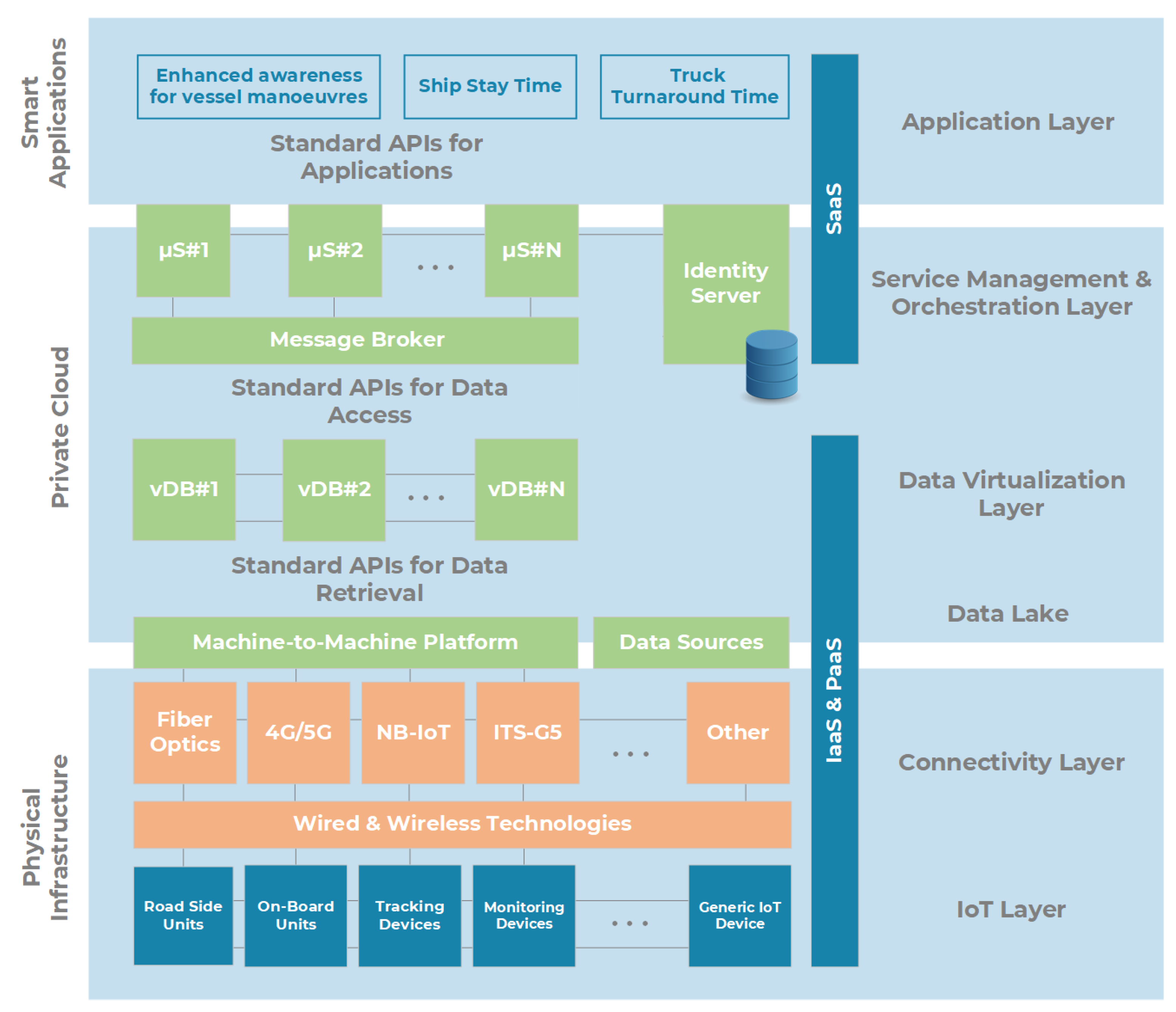
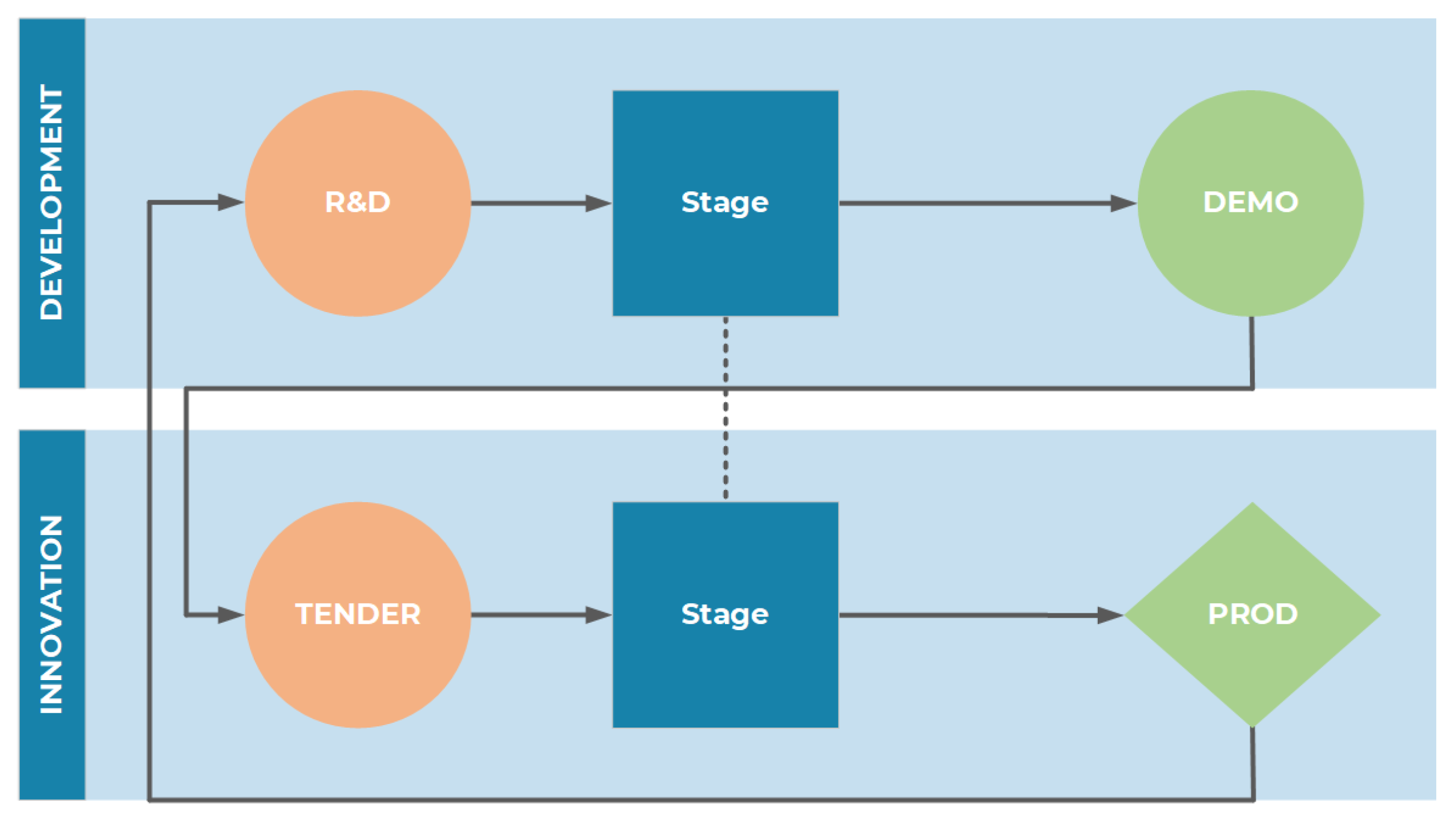
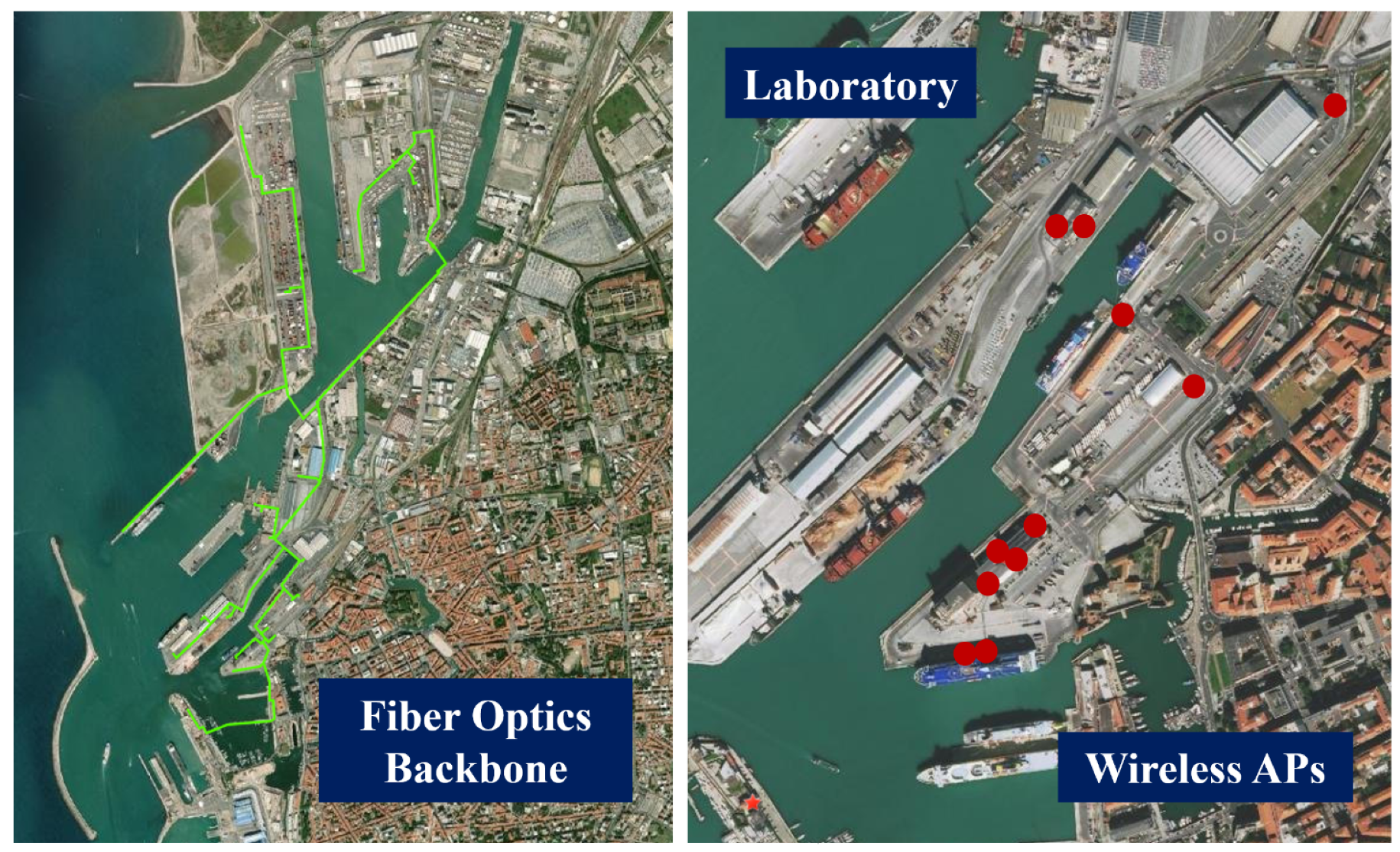

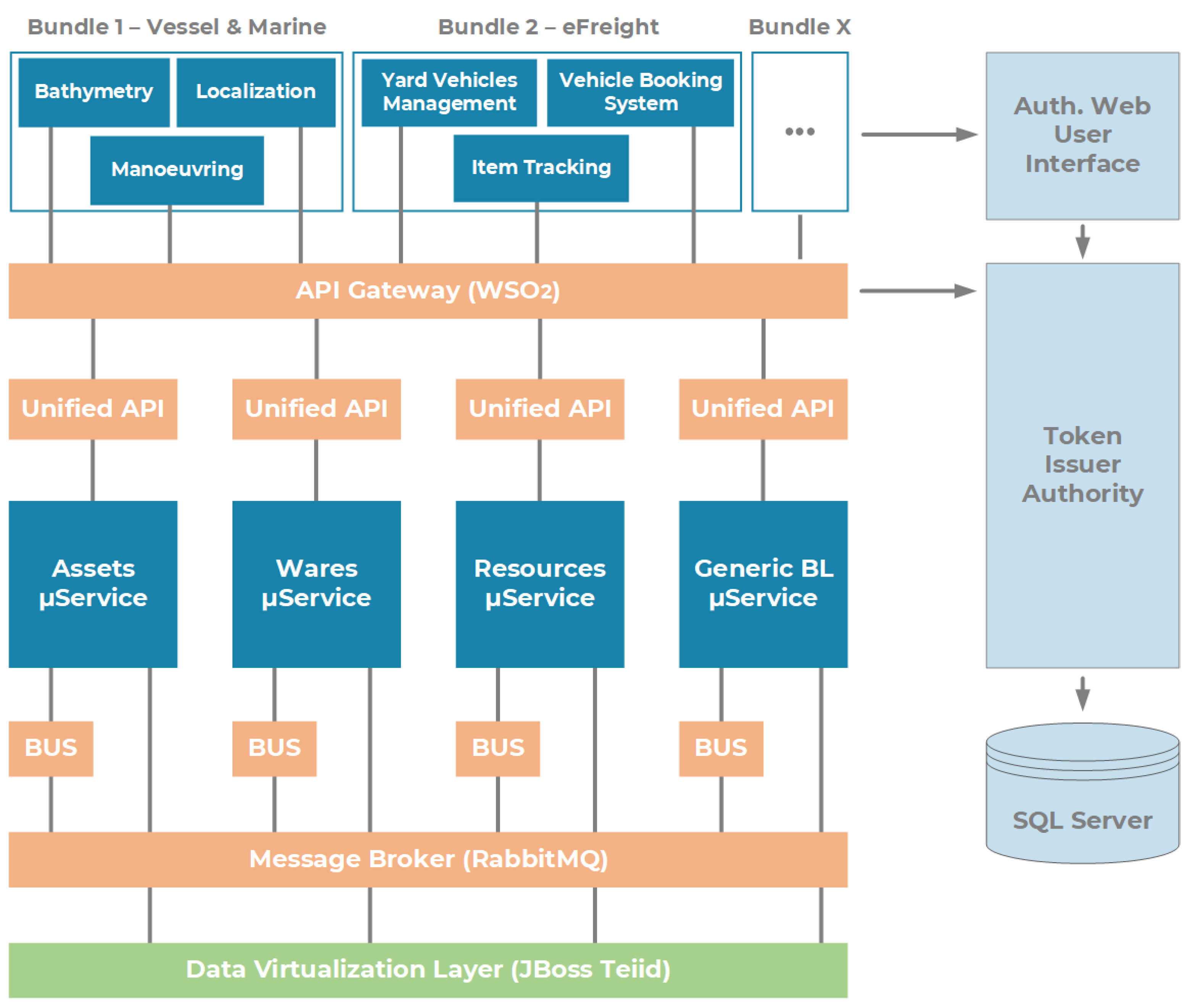
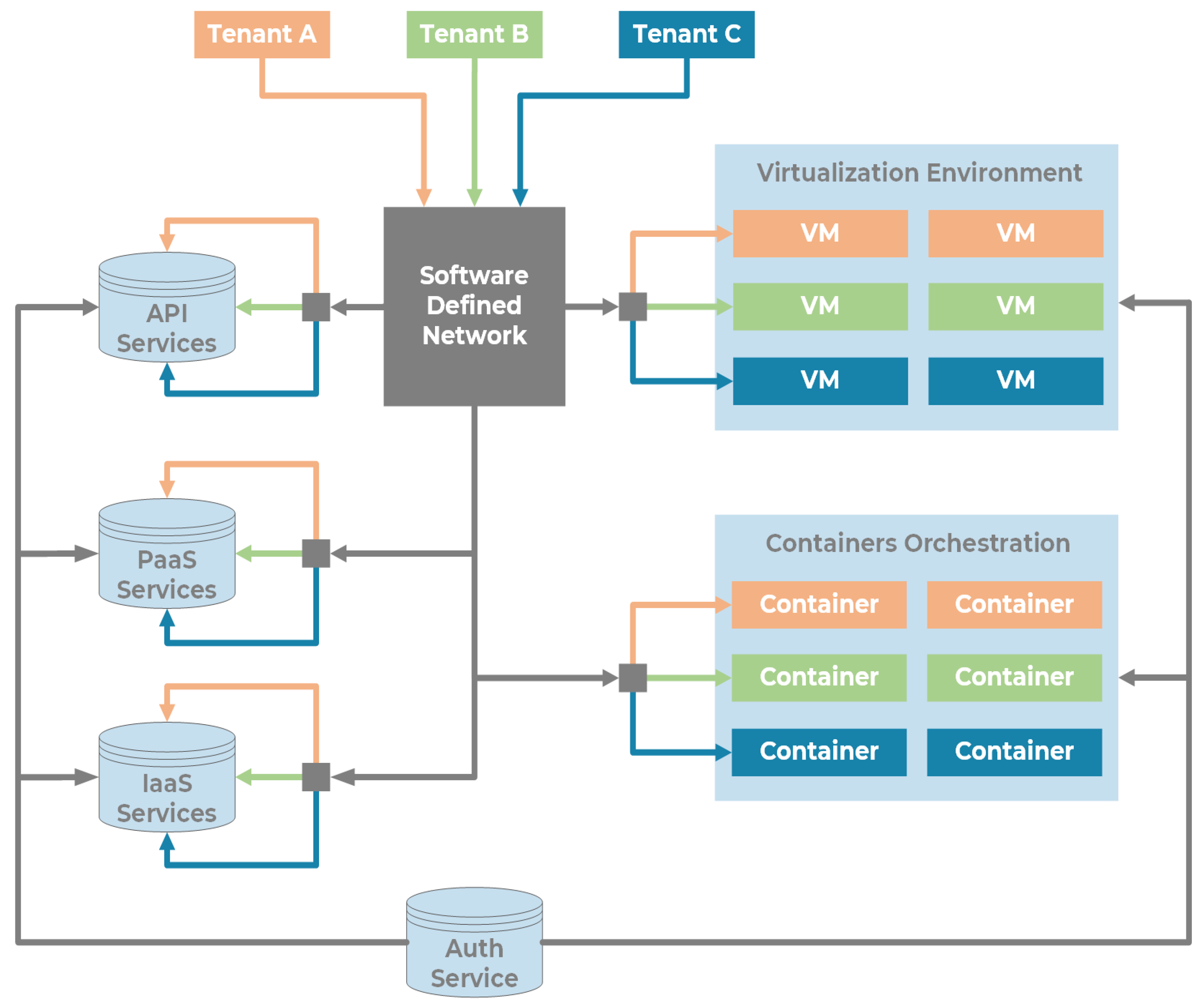
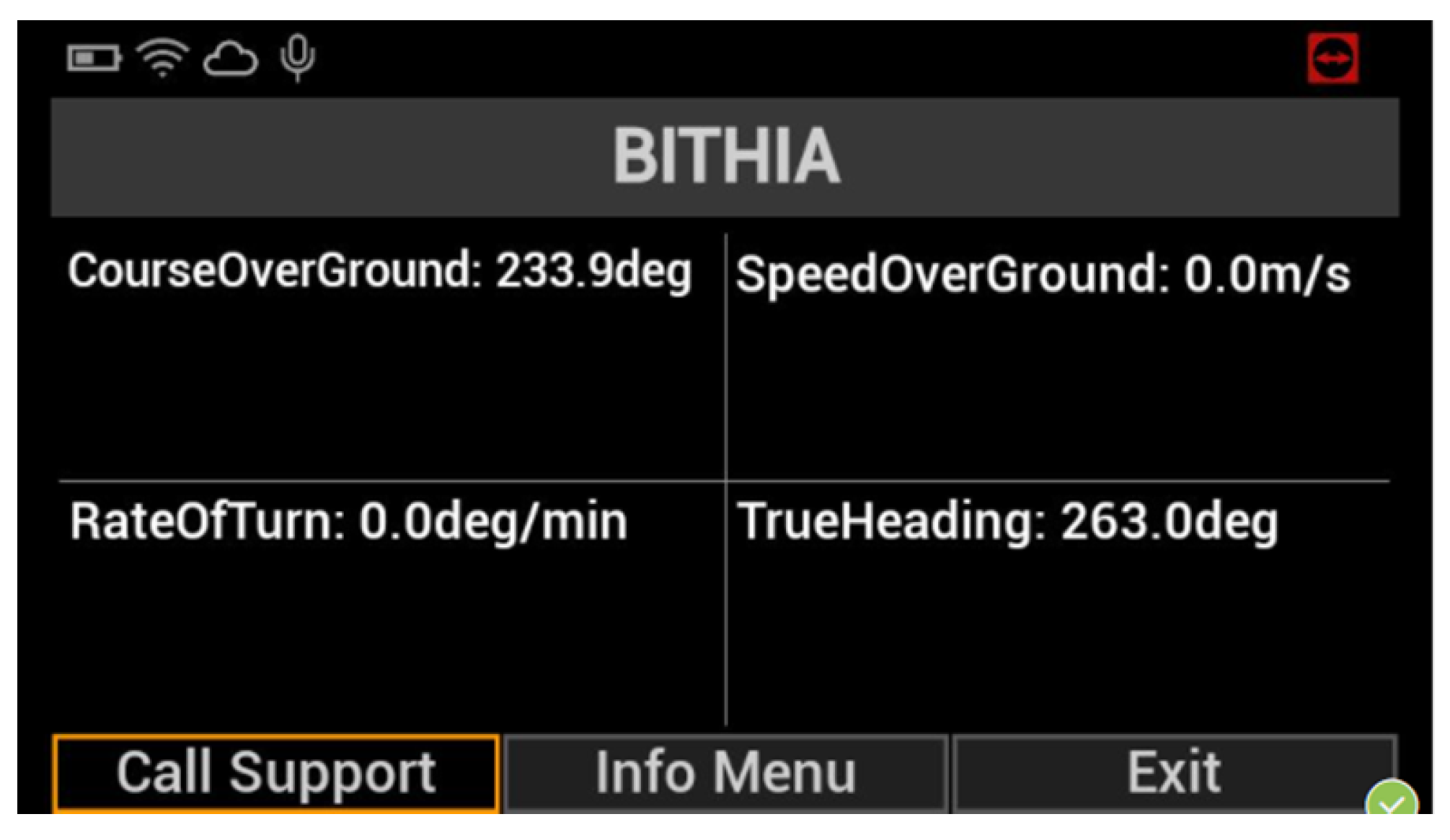
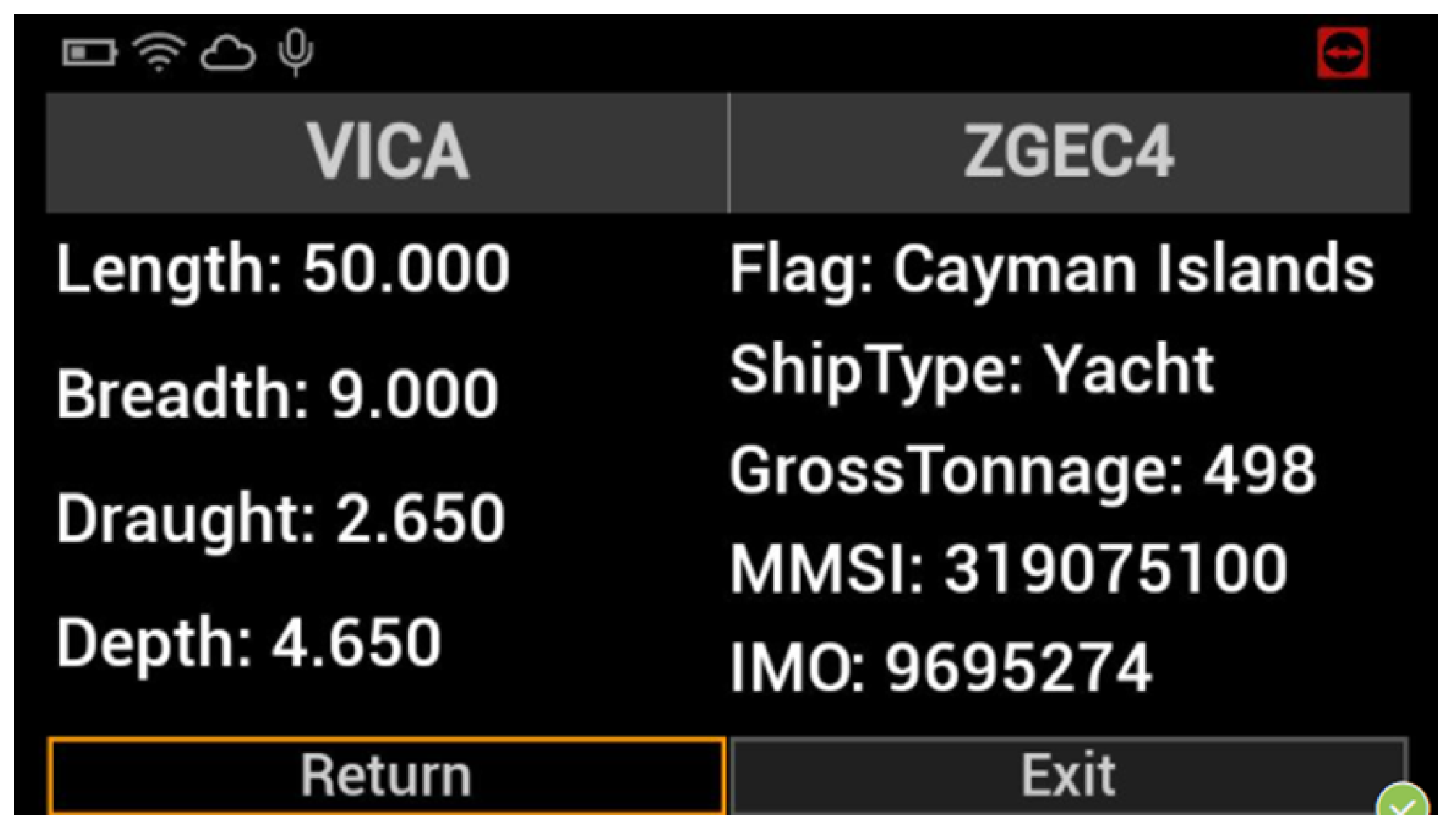
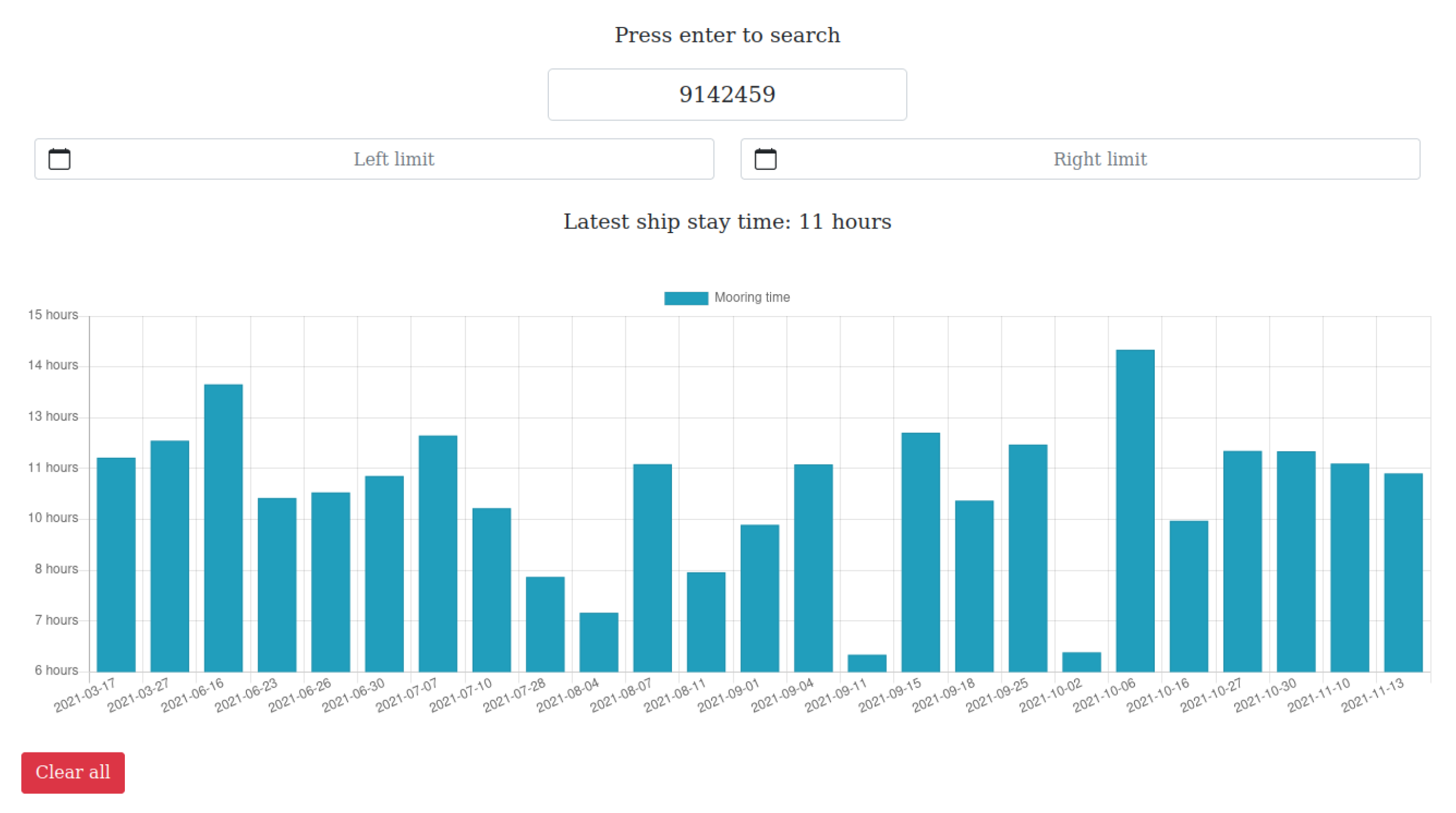

| Framework | Addressed Topic |
|---|---|
| Minh et al. [12] | Investments & Situational Awareness |
| Ignaccolo et al. [13] | Sustainability |
| Bongdart et al. [14] | Sustainability |
| Acciaro et al. [15] | Sustainability |
| Stein et al. [16] | Sustainability |
| Bolognese et al. [17] | Sustainability & Situational Awareness |
| D’Amico et al. [18] | Sustainability & Situational Awareness |
| Schauer et al. [19] | Situational Awareness |
| Lacalle et al. [20] | Situational Awareness |
Publisher’s Note: MDPI stays neutral with regard to jurisdictional claims in published maps and institutional affiliations. |
© 2021 by the authors. Licensee MDPI, Basel, Switzerland. This article is an open access article distributed under the terms and conditions of the Creative Commons Attribution (CC BY) license (https://creativecommons.org/licenses/by/4.0/).
Share and Cite
Barasti, D.; Troscia, M.; Lattuca, D.; Tardo, A.; Barsanti, I.; Pagano, P. An ICT Prototyping Framework for the “Port of the Future”. Sensors 2022, 22, 246. https://doi.org/10.3390/s22010246
Barasti D, Troscia M, Lattuca D, Tardo A, Barsanti I, Pagano P. An ICT Prototyping Framework for the “Port of the Future”. Sensors. 2022; 22(1):246. https://doi.org/10.3390/s22010246
Chicago/Turabian StyleBarasti, Davide, Martina Troscia, Domenico Lattuca, Alexandr Tardo, Igor Barsanti, and Paolo Pagano. 2022. "An ICT Prototyping Framework for the “Port of the Future”" Sensors 22, no. 1: 246. https://doi.org/10.3390/s22010246
APA StyleBarasti, D., Troscia, M., Lattuca, D., Tardo, A., Barsanti, I., & Pagano, P. (2022). An ICT Prototyping Framework for the “Port of the Future”. Sensors, 22(1), 246. https://doi.org/10.3390/s22010246










